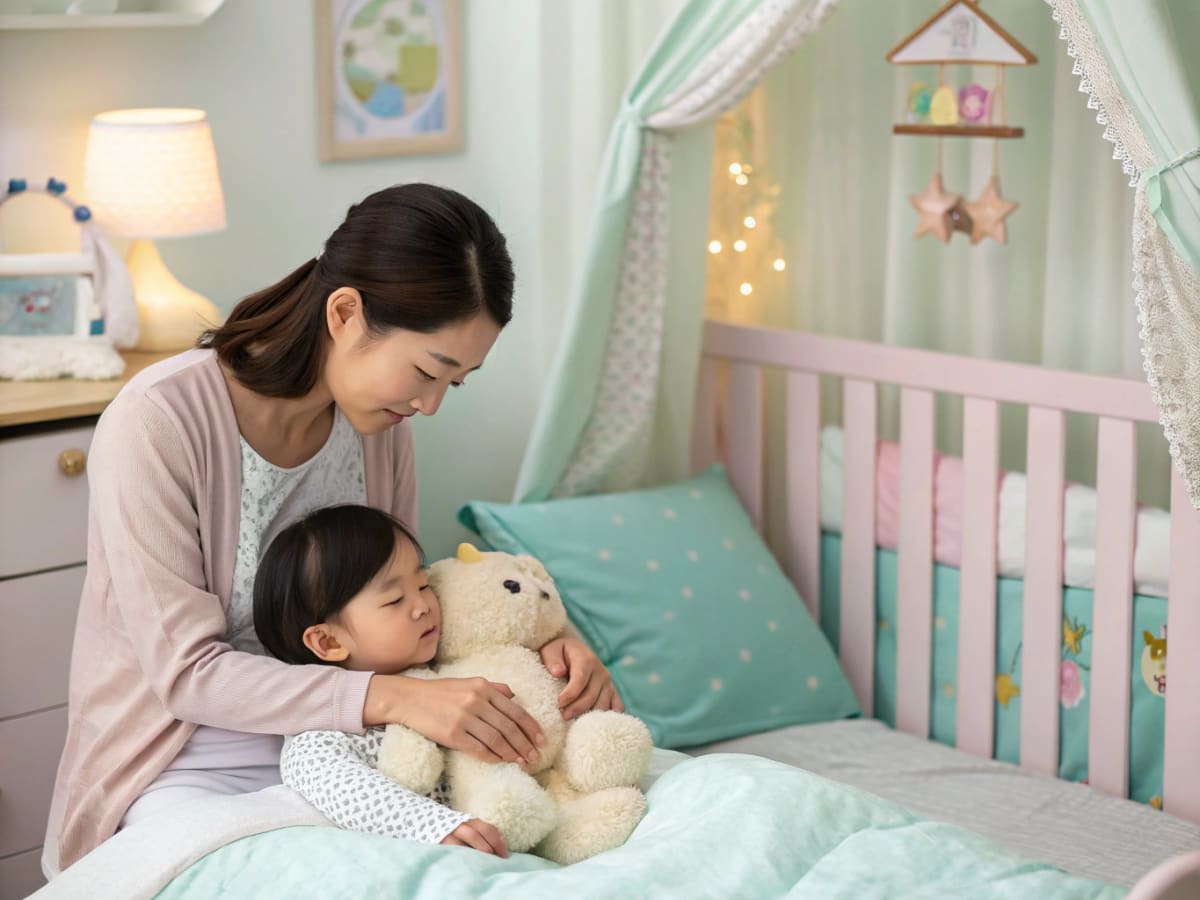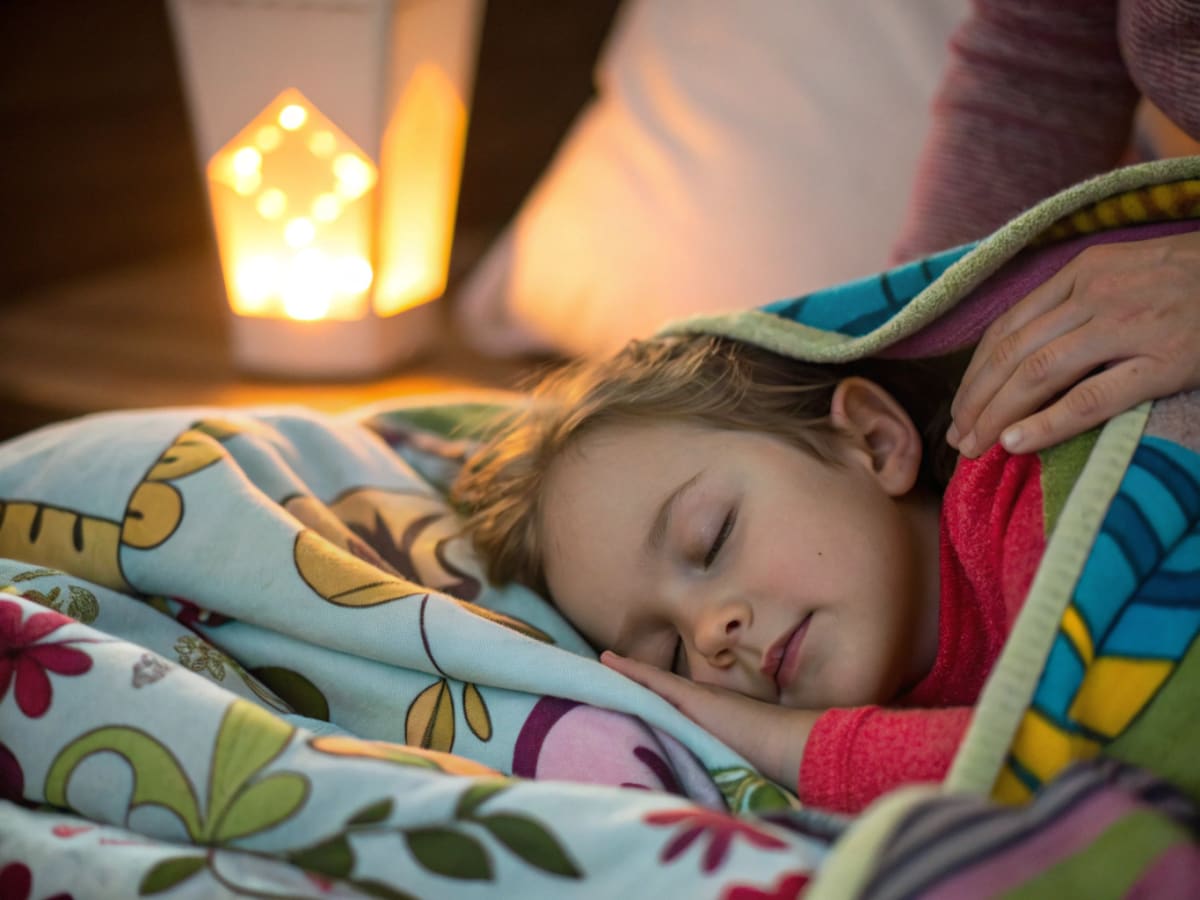
A Separation Sleep Guide for Crying Babies and Tired Parents: When and How to Start?
As you quietly leave the room after putting your baby to sleep, the sound of “Mom…” followed by crying can make a parent’s heart drop. The nightly bedtime battle can be exhausting, both physically and emotionally, and the question, “When will our baby sleep alone?” often looms large. Although it’s important to encourage your child’s independence, the anxiety and tears involved can make it a daunting task. This is the story of individual sleep.
Just as every child’s temperament and growth rate differ, the pace at which they accept individual sleep will also vary. There’s no need to be hasty. A child’s healthy sleep independence starts not with a parent’s firmness, but with a deep understanding of the child’s feelings and a warm patience. Here’s a step-by-step guide to help both the child and the parents have a restful night.
Why Is Individual Sleep Necessary and When Is the Best Time to Start?
Individual sleep goes beyond merely sleeping separately; it is a crucial developmental task that moves the child toward healthy growth and independence. When parents and children both enjoy sound, stable sleep in their own spaces, it enhances the quality of life for everyone and positively impacts the child’s growth.
The First Step Toward Healthy Sleep Habits for Your Child
It’s widely known that growth hormones are actively secreted between 10 PM and 2 AM. These hormones are secreted smoothly during deep sleep or non-REM sleep. If a child shares a bed with parents, frequent disturbances or noise can interrupt their sleep. Cultivating the habit of sleeping soundly without disturbances in their own space can positively affect not only physical growth but also emotional stability. This is a crucial step in forming healthy sleep habits.

The Optimal Time to Start
Generally, attempting to separate sleeping arrangements is considered suitable when children are around 2-3 years old. At this age, children can understand their parents to some extent, and security blankets or stuffed toys can help them find comfort on their own. However, this is just an average guideline, and the most important thing is the signal from ‘our child.’ If the child’s anxiety about being separated from parents is too high, or if they’ve recently experienced significant changes, like a move or the birth of a sibling, it may be wise to delay. Positive signs include fewer bedtime struggles and a decrease in nighttime awakenings.
Creating an Environment for Successful Sleep Independence
It’s crucial that the child’s room feels like a ‘cozy and safe space’ rather than an ‘anxious separation from mom.’ The more the child likes their room and bed, the less resistance they will naturally have to sleeping alone.
Preparing a Cozy and Secure Bedtime
First, choose bedding that the child can develop an attachment to. Blankets and pillows in colors and textures that the child likes can provide psychological comfort. If the child is afraid of the dark, consider using a soft-lit nightlight. Designate their favorite toy or blanket as a ‘bedtime buddy,’ which can serve as a comforting presence when parents are not around. This ‘bedtime buddy’ can be a stable source of reassurance.
Creating Our Own Bedtime Ritual
Develop a consistent ‘sleep ritual’ to follow every night before bed. This signals to the child’s body and brain that ‘it’s almost time to sleep,’ aiding in a smooth transition to sleep mode. Setting a sequence like ‘bath → change into pajamas → read together → listen to quiet music → say goodnight’ and maintaining it for about 15-30 minutes in a calm and quiet environment can be effective. The important thing is to maintain consistency and repeat it daily.
Practical Tips for Soothing Your Child during Separation Sleep
Once the environment is set up, it’s time to attempt the actual sleeping arrangement separation. This may feel like the hardest part, as a parent’s heart can break as the child cries and clings.
“What should I do if my child cries and calls for their mom? I’m worried it might hurt them emotionally.”
Many parents face this dilemma. However, it doesn’t mean ignoring the child’s feelings entirely. It’s essential to empathize with the child’s anxiety while maintaining a gentle yet firm approach to the established rules. The aim is not to avoid making the child cry but to instill the belief that they can fall asleep independently.
Gradual Distancing
Instead of leaving the child alone from the start, use a method that gradually increases separation. During the first few days, place a chair next to the child’s bed and sit with them until they fall asleep. As the child gets used to this, gradually move the chair towards the door over several days. In the final stage, you can reassure them from outside the door with your voice. If the child wakes up and cries, return to the room, pat their back, and gently say, “Mom is here, it’s okay, sleep tight,” before returning to your place. This process helps the child trust that their parents are always nearby.
Advice for Parents to Stay Steady
Individual sleep requires patience not just from the child, but also from the parents. There may be days when things don’t go as planned, and moments when a child who usually sleeps well suddenly regresses. Don’t blame yourself by wondering, ‘Am I doing something wrong?’ Remember that a child’s growth is not a straight line but resembles a staircase moving forward and backward.
Maintain Consistency, but Stay Flexible
Inconsistent behavior, like allowing a rule yesterday and denying it today, can confuse the child. It’s crucial for both parents to agree on the rules and maintain a consistent approach. However, on special days, such as when the child is ill or has had a difficult day at preschool, flexibility is wise to comfort the child’s heart. Consider it a ‘rest day,’ not a ‘failure.’ A parent’s anxiety can easily transfer to the child. Maintain a positive mindset by saying, “We can do it,” and support each other through this process. Practicing sleeping alone is another cherished journey of growth, based on trust between the child and the parents.
Although individual sleep can be a new and challenging journey for both the child and the parents, it can become a period of mutual understanding and respect. When consistent attitudes and warm encouragement are combined, the child will gradually find peace in their own sleeping space. MOM-i is here to explore essential parenting tips with you, and if you need customized content, please Submit a Proposal.
Contact MOM-i for inquiries.
Email inquiries: momi@emtake.com